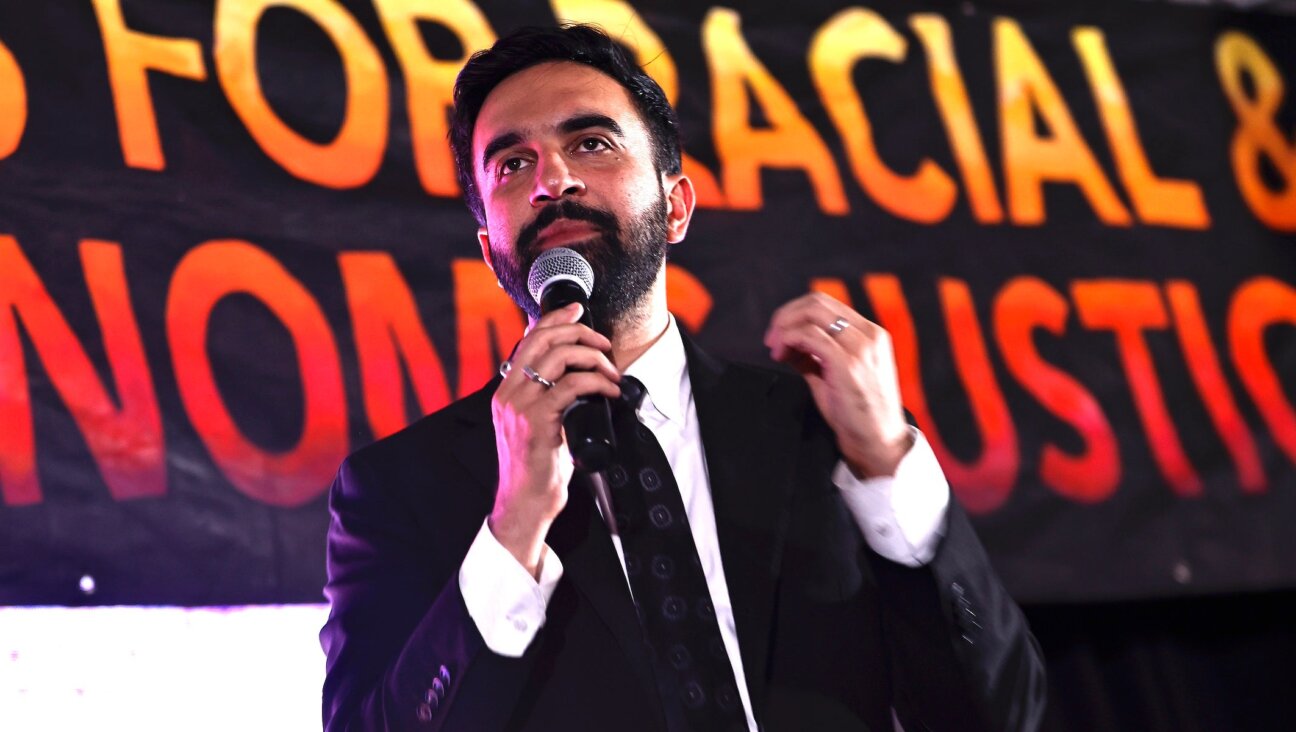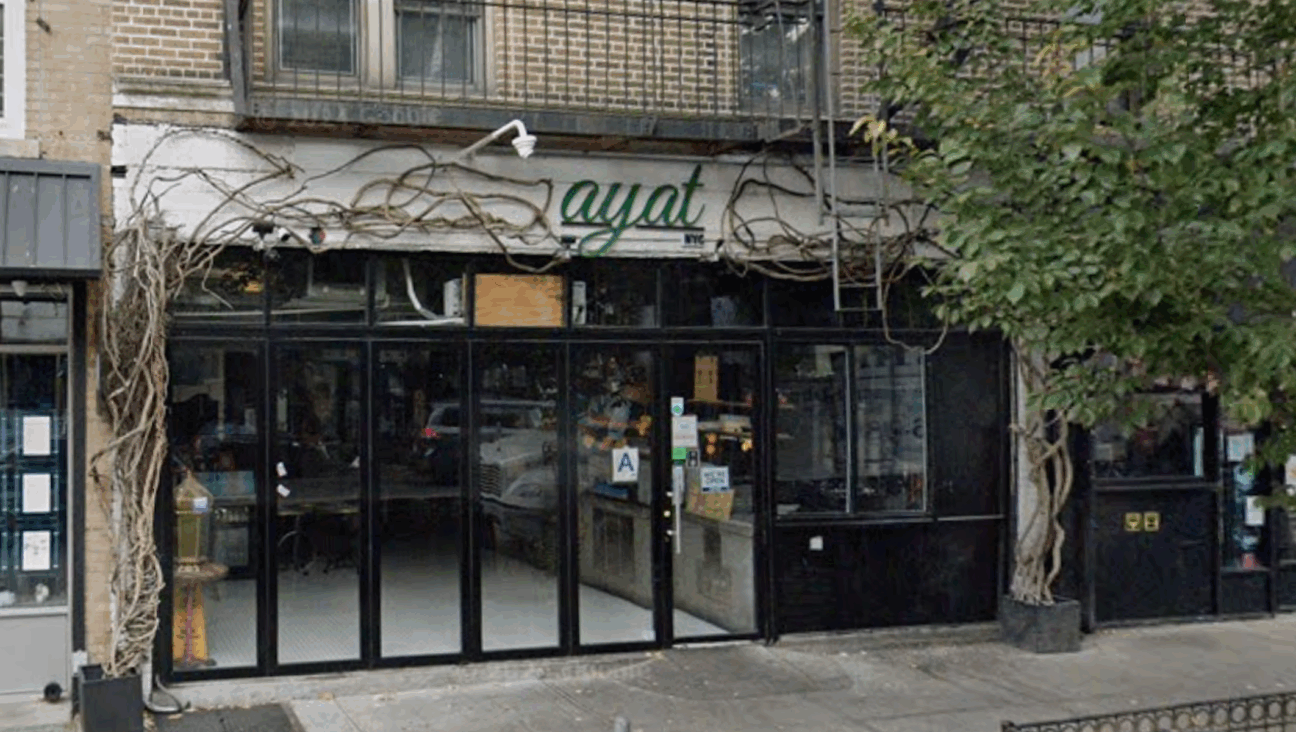Warhol’s Tribe
This week marks the 20th anniversary of the death of Andy Warhol — as good a time as any to reminisce, in these pages, about the famed artist’s place in Jewish history. Although Warhol is best known for his portraits of such pop icons as Elvis Presley and Jackie Kennedy, in 1980 he also completed a set of 10 portraits of Jewish icons, commissioned by art dealer and gallery owner Ronald Feldman. By the time they collaborated on the series, Feldman and Warhol had been friends for almost 10 years. The two men met in the early 1970s, when Feldman and his wife opened Ronald Feldman Fine Arts in the Stable Gallery building on East 74th Street in Manhattan, where Warhol had first showed his famous Campbell’s Soup Can paintings. Even after Feldman’s gallery relocated to SoHo, Warhol would stop by every Saturday with his dachshund, Archie, to chat and ask for ideas.
Later in the 1970s, Feldman noticed that Warhol had been straying from his usual pattern of making 10 identical prints of the same image —10 Marilyns, 10 flowers, 10 Maos — and that he had been taking an almost cubist approach to his subject matter. Warhol’s Muhammad Ali series, for instance, which he had completed in 1978, consisted of four different prints, each of which showed a different view of Ali’s head or hand. “So that all of a sudden, he was making a fractured image of somebody. Instead of the one image in different colors but the same image, each element was a separate unit,” Feldman told the Forward.
When an Israeli art dealer called Feldman to ask whether Andy might paint 10 Golda Meirs, it was Feldman’s “aha” moment. “Ten Goldas just seemed so old as an idea,” after the fractured canvasses, Feldman said. “You can do a historic 10 — 10 different people — and he loved that idea.” Feldman commissioned Warhol to make 200 sets of the 10 silk-screened print folios — later, he commissioned Warhol to do a set of paintings, as well — and the two set to work creating a list of the subjects, whom Warhol referred to simply as his “Jewish geniuses.”
They wanted a representative from a mix of eras and professions — actors, writers, politicians and scientists are all included. Karl Marx almost made the cut, until they realized that he had died in 1883, missing the 20th-century mark by almost two decades. They considered Bob Dylan, but he was jettisoned after they decided to include George Gershwin instead; plus, Dylan had become a born-again Christian, and Feldman and Warhol’s research had turned up the fact that Sarah Bernhardt, whom they had already settled on, had converted to Catholicism — “so we already had that,” Feldman said. In addition to Gershwin and Bernhardt, the geniuses are Albert Einstein, Franz Kafka, Gertrude Stein, Martin Buber, Louis Brandeis, the Marx Brothers, Golda Meir and Sigmund Freud.
In 1980, an exhibit of the work, Ten Portraits of Jews of the Twentieth Century, opened at the Jewish Museum on Manhattan’s Upper East Side — and was promptly trashed by New York Times art critic Hilton Kramer. “To the many afflictions suffered by the Jewish people in the course of their long history, the new Andy Warhol show at the Jewish Museum cannot be said to make a significant addition,” wrote Kramer in a review that ran the day before Yom Kippur. “But what it may do to the reputation of the Jewish Museum is, as they say, something else.”
Carrie Rickey, an art critic reviewing the show for Artforum magazine, was also initially put off by the whole concept of the series, seeing it as “Jewploitation” and quipping that the project’s “only raison d’être was to penetrate a new market: the Synagogue circuit.” But Warhol’s craftsmanship won her over. “Somehow this segregated ethnic segment — as offensive as it does sound — provided Warhol with enough referents to make the work successful,” she wrote. “The paintings of Jews had an unexpected mix of cultural anthropology, portraiture, celebration of celebrity, and study of intelligentsia — all at the same time.”
The series, part of the permanent collection of the Jewish Museum, is currently on loan to the Park Avenue Bank as part of the bank’s Meet a Museum exhibition program. It runs through March 2.
Beth Schwartzapfel is a freelance writer based in Brooklyn. She is working toward a Master of Fine Arts in creative writing at the New School.
















